Tire Pressure: Data and Details
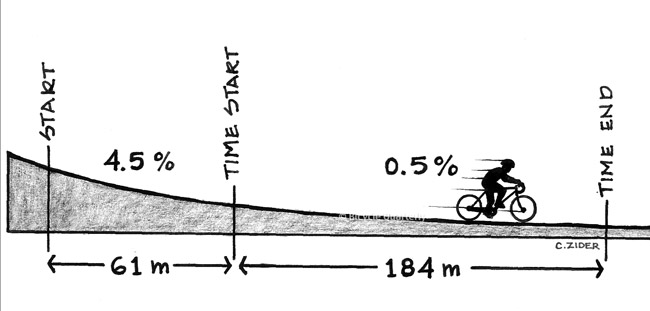
A little while ago, I wrote about how new scientific research has allowed us to design wide, supple tires that offer the speed of narrow, high-end racing tires. The key finding is that above a certain threshold, increasing tire pressure no longer results in lower rolling resistance. While these new data have become widely accepted – witness professional racers adopting wider tires and lower pressures – it’s natural that new ideas are met with skepticism. In order to contribute to a better understanding of how tires work, I’d like to share more data from Bicycle Quarterly‘s testing.
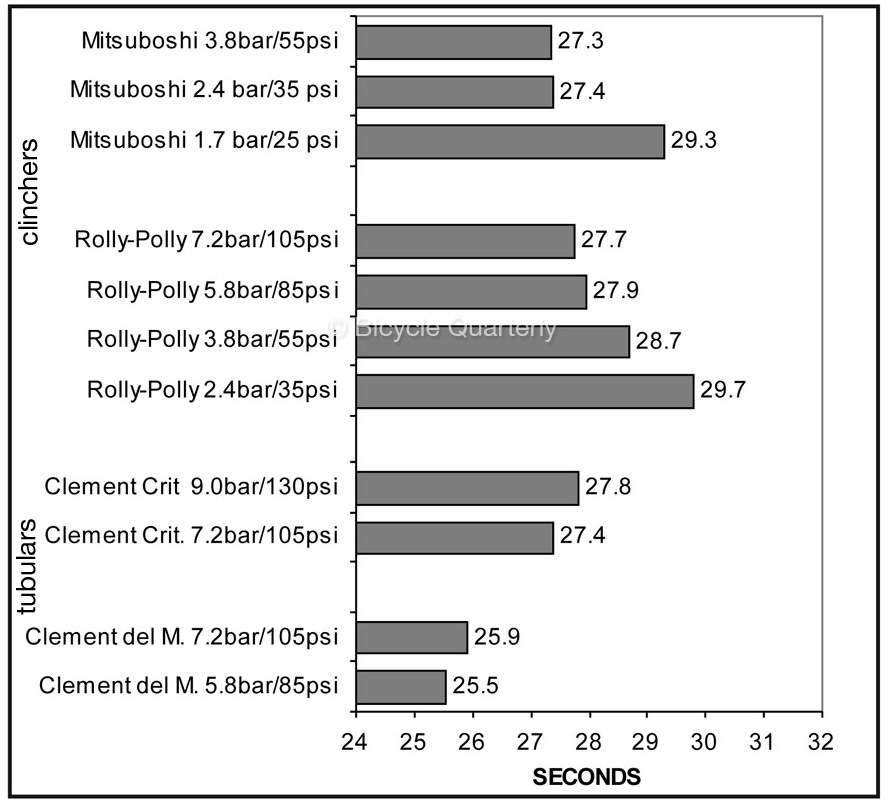
The data above came from Bicycle Quarterly rolldown tests of various tires. The results indicate that above a certain threshold, for clinchers, tire performance increases only very slightly, if at all. It’s not surprising that the 38 mm-wide Mitsuboshi tire rolled faster at 35 psi than at 25 psi – it was hardly rideable at the lower pressure. But increasing pressure to 55 psi resulted in no speed increase.
We saw the same for the 27 mm-wide Rolly-Poly. Somewhere between 55 and 85 psi, higher pressure no longer resulted in significantly increased performance. Going from 85 to 105 psi resulted in only a minimal increase in speed. For the two tubular tires, the effect was reversed: Higher pressures actually reduced performance.
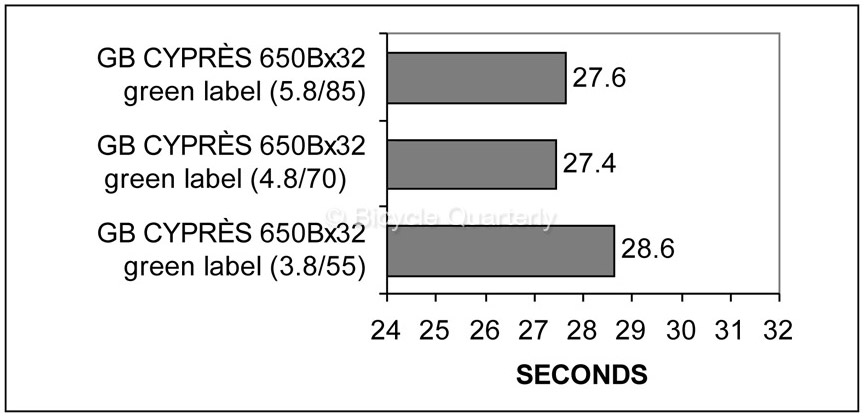
We’ve confirmed this finding numerous times. Above is another set of test runs (pressures are in bar/psi). For these 32 mm tires, increasing the pressure from 7o psi to 85 psi brought no significant change in performance. (The apparently slower speed at 85 psi is not statistically significant.) Please note that the values you see here are not corrected for temperature, so you can’t compare different tires. (The pressure runs were done consecutively, so temperature didn’t change from one pressure to the next.)
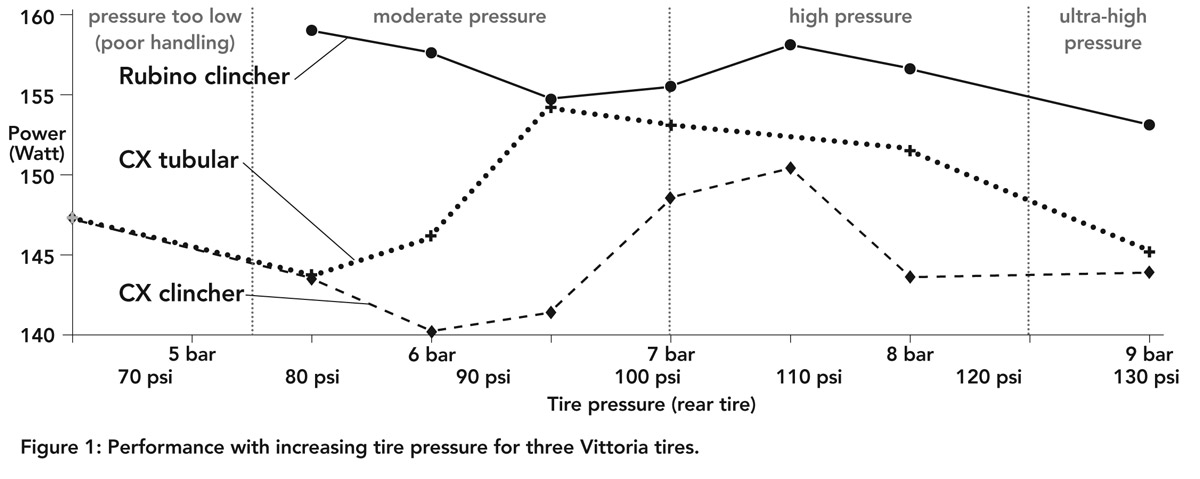
We discussed the measurements with power meters in the previous post (above). That data also has been confirmed multiple times, at different speeds.
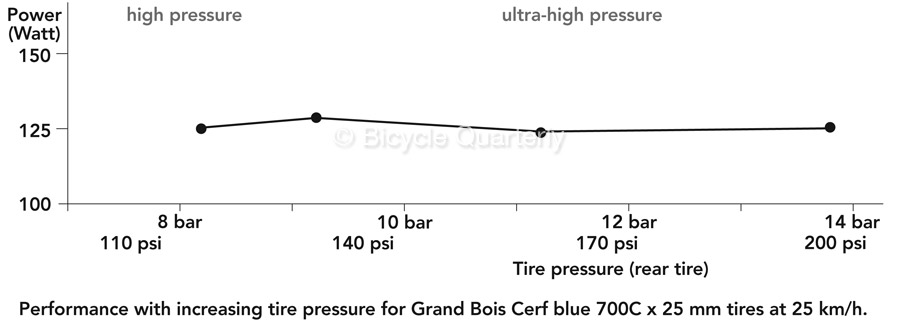
Above is data from running ultra-high pressures, up to 200 psi. Performance did not change with increasing pressures. (Don’t do this at home, 14 bar/200 psi is not safe with these tires!) I could bore you with even more data, but I think this is pretty convincing, especially since we’ve confirmed numerous times that our tests are repeatable (testing the same setup multiple times yields the same results) and statistically significant (meaning we aren’t just looking at random noise in the data). That is important, because all too many studies are based on single test runs, which don’t meet basic scientific requirements. Now that we’ve conclusively debunked the old view of “higher pressure = more speed”, let’s look at some of the details in the data above.
Rough vs. Smooth Pavement
The rolldown tests were performed on relatively rough pavement. No holes or bumps, but the tar between the aggregate had washed away over decades of Seattle weather. Interestingly, high pressures generally did result in slightly higher speeds for some clincher tires. It’s not a lot, but it’s statistically significant.
The track tests were run on very smooth, newly laid asphalt pavement. There, we see the opposite. High pressures of 100-110 psi result in slightly lower speeds. How can we explain this? One hypothesis is that the tire deforms more on the rougher pavement to conform to the surface irregularities. At lower pressure, you create an imprint of the road surface in the tire as it rolls. At higher pressure, the tire bridges the gaps between the high points, and thus deforms less. On the smooth road, there aren’t any gaps to bridge, and so the high pressure loses its advantage.
Moderately high pressure = worst performance
On the smooth track, moderately-high pressure (100-110 psi) is worse than either lower or higher pressures. Why is that? Here is a possible explanation: As you increase the pressure, the suspension losses (vibrations) increase faster than the flexing of the tire (hysteresis) is reduced. So you lose performance as you increase pressure. At a certain point, the bike is vibrating as much as it can, but higher pressures still reduce the flexing of the tire. So from that point onward, higher pressures improve performance – until you end up back where you started at lower pressures.
Tubulars vs. Clinchers
What about the worse performance of tubulars at higher pressures? Tubulars derive much of their performance from their suppleness and low suspension losses. Increasing the pressure increases vibrations faster than it reduces the flexing of the tires. These explanations are just hypotheses – our best guesses to explain what we see. The data itself – higher pressures don’t lead to improved performance – is beyond doubt.
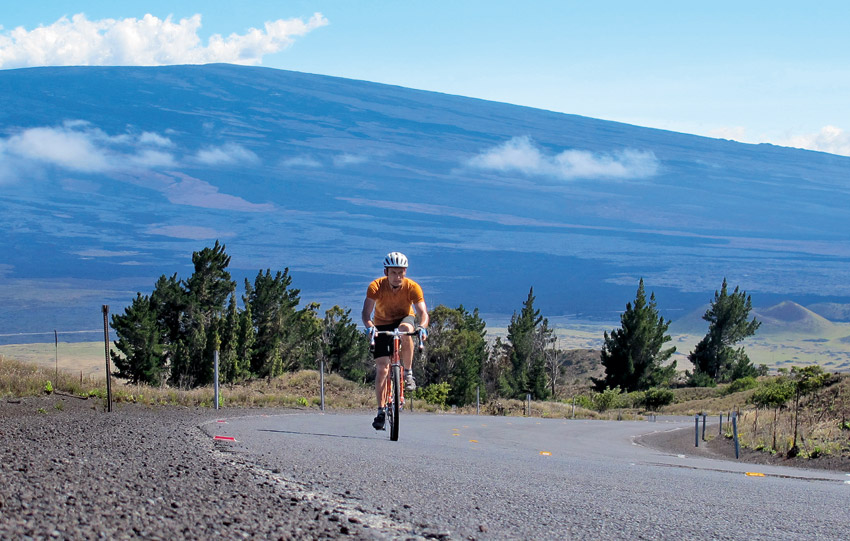
Take-Home Message
For most riders, the take-home message is simply this: As long as you inflate your tires enough that they are safe to ride, tire pressure doesn’t matter much. Find a pressure that feels good when cornering, and ride your tires at that pressure. When in doubt, let out some air – you’ll be more comfortable and have better cornering grip. (If you ride narrow tires, beware of pinch flats, though!)
If you worry about the last bit of performance, then you can try to use the data above to tease out that last 2%. On smooth roads, low tire pressures yield the best performance. On rough pavement that doesn’t have holes or bumps, increasing your pressure may make your tires a little bit faster. That may seem counter-intuitive, and of course, it also will be less comfortable. But if you are doing a short time trial on a country road, it may be worth considering. Ideally, you’d run a few experiments with a power meter to dial in your tire pressure for that particular road surface.
If you run tubular tires, you should definitely run them at relatively low pressures. This provides the best performance and the best comfort on all surfaces we’ve tested. As for me, I run my tires at relatively low pressures on all roads. My rides encompass a multitude of surfaces, and on truly bumpy roads, we’ve shown that lower pressures always are faster, because the bike bounces less. But that is a topic for another day…
- Further reading:
- What are suspension losses?
- The Performance of Tires: Bicycle Quarterly Vol. 11, No. 4.
- Roll-down tests of tire performance: Bicycle Quarterly Vol. 5, No. 1.
- More roll-down tests of tire performance: Bicycle Quarterly Vol. 5, No. 3.


